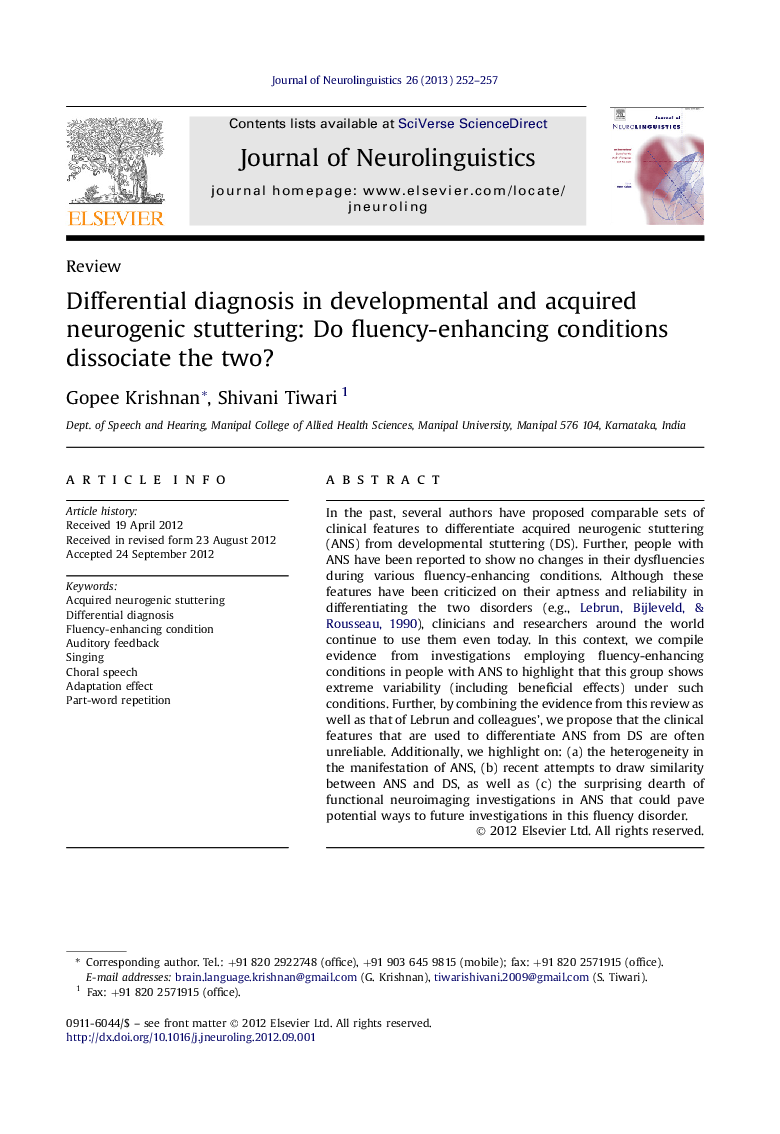| Article ID | Journal | Published Year | Pages | File Type |
|---|---|---|---|---|
| 911852 | Journal of Neurolinguistics | 2013 | 6 Pages |
In the past, several authors have proposed comparable sets of clinical features to differentiate acquired neurogenic stuttering (ANS) from developmental stuttering (DS). Further, people with ANS have been reported to show no changes in their dysfluencies during various fluency-enhancing conditions. Although these features have been criticized on their aptness and reliability in differentiating the two disorders (e.g., Lebrun, Bijleveld, & Rousseau, 1990), clinicians and researchers around the world continue to use them even today. In this context, we compile evidence from investigations employing fluency-enhancing conditions in people with ANS to highlight that this group shows extreme variability (including beneficial effects) under such conditions. Further, by combining the evidence from this review as well as that of Lebrun and colleagues', we propose that the clinical features that are used to differentiate ANS from DS are often unreliable. Additionally, we highlight on: (a) the heterogeneity in the manifestation of ANS, (b) recent attempts to draw similarity between ANS and DS, as well as (c) the surprising dearth of functional neuroimaging investigations in ANS that could pave potential ways to future investigations in this fluency disorder.
► The existing features to differentiate ANS from DS are fallible and unreliable. ► ANS shows marked heterogeneity under the fluency-enhancing conditions. ► Drawing similarity between ANS and DS may be promising, than differentiating them. ► Functional neuroimaging investigations are surprisingly lacking in ANS.
